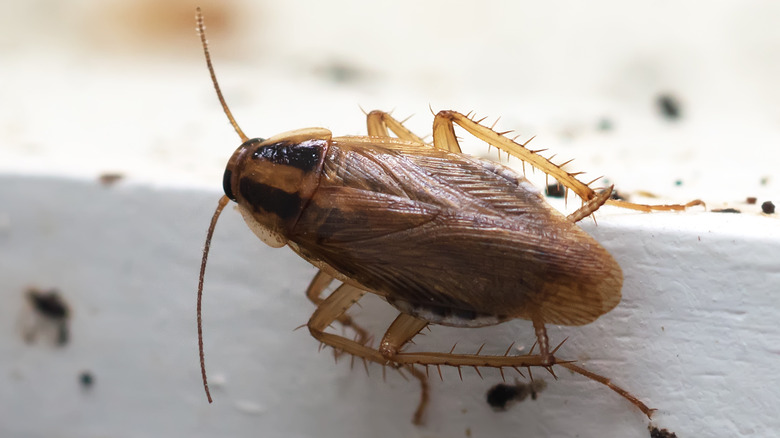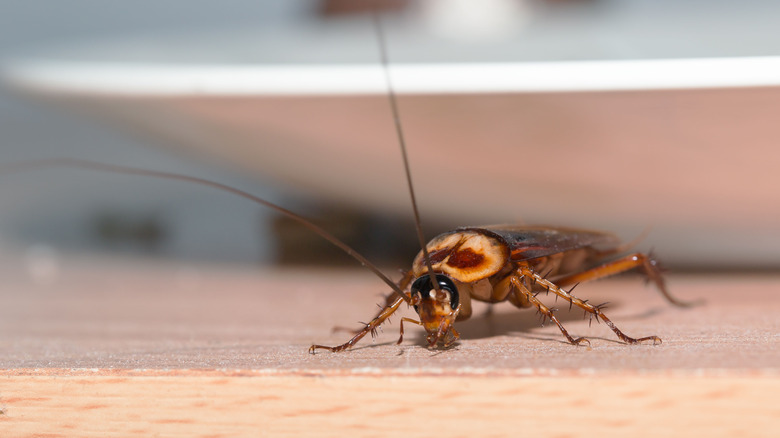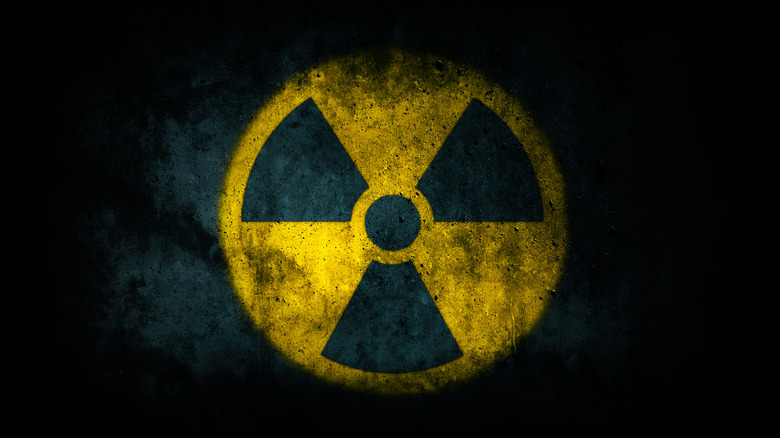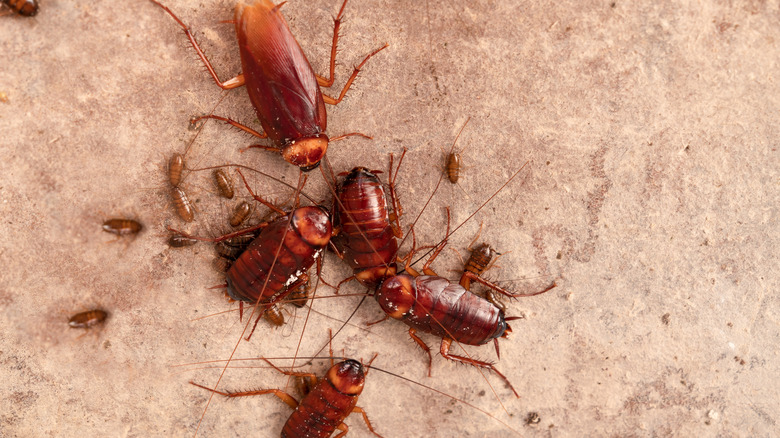Would A Cockroach Really Be Able To Survive A Nuclear War?
If you've ever had a cockroach infestation, you probably understand why these bugs have a reputation for being unkillable beasts. With enhanced resistance to standard household pesticides and a speedy rate of reproduction, it can sometimes seem impossible to get rid of roaches entirely, according to Pursuit. In fact, a popular myth has cropped up suggesting that cockroaches can survive anything, even a nuclear apocalypse. This theory first got legs during the 1940s, when reports suggested that there were cockroaches roaming around in the rubble after the atomic bomb was dropped on Hiroshima, according to Clear First. Some people even claimed that cockroaches were unharmed as little as 1,000 feet away from the detonation site (via Jeevoka).
But just because cockroaches seem immortal doesn't mean they actually are. Which raises the question: Is the common myth true? Can cockroaches actually survive a nuclear apocalypse? Or are they less hardy than we tend to imagine?
Different types of cockroaches
While we tend to describe cockroaches as a single type of creature, there are actually over 4,000 different cockroach species, according to Pursuit. The cockroaches you might commonly find invading your pantry or shower drains are American or German cockroaches. American cockroaches are brown, around 50 millimeters long, and can live for up to two years, according to Orkin. German cockroaches have a similar hue, but they're much smaller at only around 15 mm long, and only live for about a year.
However, there are plenty of other types of cockroaches which don't make their homes inside human dwellings. Many of these cockroaches look so different from American and German roaches that you might not immediately be able to identify them as roaches at all. These ranks include the Death's Head cockroach, which can be found in the wilds of North America, including in Mexico, Central America, and the Caribbean, according to Treehugger. The species is marked by its unique coloring, with a large black splotch around its head which looks similar to a skull. The Domino Cockroach is another uniquely-colored cockroach, with a round, black body covered in white spots. This bug can be found in the forests of southern India.
Are cockroaches resistant to radiation?
But would any or all of these bugs actually survive an apocalypse? According to experts, while cockroaches may be more resilient than humans in the face of a nuclear bomb, they wouldn't emerge unscathed, according to Pursuit. While humans die after exposure to between 400 and 1,000 rads of radiation, it takes less than 6,400 rads of radiation to kill most cockroaches, according to ABC Science (Australia) (ABC). That means cockroaches are only about six to 15 times more durable than humans, so they'd be unlikely to survive a nuclear bomb. The Hiroshima bomb released around 10,000 rads of radiation, according to Jeevoka.
Of additional interest in the apocalypse scenario is the question of whether or not cockroaches can reproduce after a nuclear disaster. Cockroaches appeared to be vulnerable in this as well, with their reproductive prowess faltering after exposure to around 1,000 rads of radiation, according to ABC.
However, these questions about radiation may ultimately be moot. Even if cockroaches could withstand the radiation impact of a nuclear weapon, research suggests that the heat from the detonation would instantly kill any cockroaches within the blast radius, according to Clear First. That suggests that, in a true nuclear apocalypse in which nuclear weapons were detonated globally, a cockroach would be just as much a goner as a human.
Other insects which are more likely to survive the apocalypse
Though it's cockroaches who have earned a reputation for hardiness, research suggests that there are other insects which would be much more likely to survive in an apocalyptic scenario. The fruit fly is one such durable insect. Research shows that it takes 64,000 rads of radiation to kill fruit flies, a staggering 10 times the amount it takes to kill a cockroach, according to ABC. There also appears to be evidence that fruit flies survived at the actual site of the Hiroshima bomb. "I've certainly seen photographs of injured people in Hiroshima that have lots of flies around," said University of Melbourne Professor Tilman Ruff. But alive doesn't mean undamaged. "They still would have been affected, even if they appear more resistant than humans," he said.
Other particularly durable insects include braconidae wasps, which could survive up to 180,000 rads of radiation, according to Jeevoka. Wood-boring insects can easily take between 40,000 and 70,000 rads of radiation.



